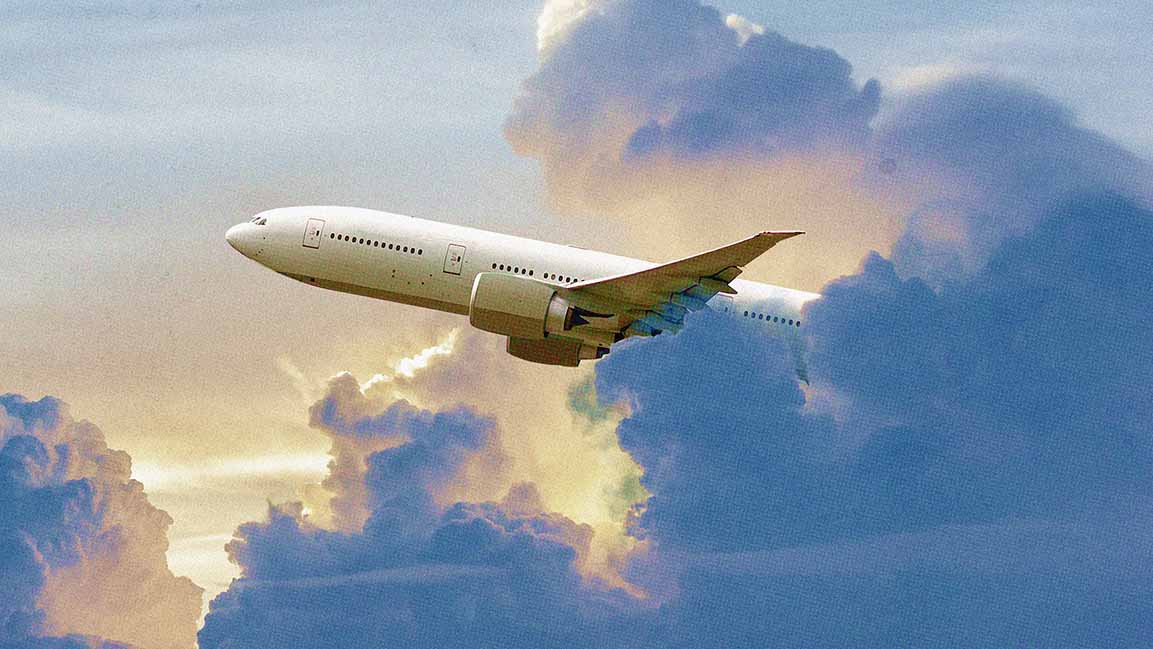- | 11:00 am
Middle Eastern airlines are poised for $3.8 billion profit surge in 2024
Airlines in the area are maintaining their upward trajectory in passenger and cargo volumes.

The Gulf region plays a pivotal role in the global aviation industry, largely due to its airlines that have set benchmarks for luxury, customer service, and operational excellence.
Air travel is poised to set new records, with passenger numbers expected to hit 4.96 billion and cargo volumes forecasted at 62 million tonnes. The industry aims to connect nearly 5 billion people across 22,000 routes, underscoring the critical role of airline profitability and financial resilience in supporting customer needs and sustainability targets, including achieving net-zero carbon emissions by 2050.
According to a recent report by the International Air Transport Association (IATA), Middle Eastern airlines are set to see profits in 2024 surge 22.5% from previous estimates to reach $3.8 billion.
Gulf-based airlines such as Etihad, Emirates, Qatar Airways, Saudi Arabian Airlines, and Oman Air are expected to contribute a significant profit boost of $3.8 billion to the region’s aviation industry.
Airlines in the area are maintaining their upward trajectory in passenger and cargo volumes thanks to strong regional economies, IATA said.
This uptick, representing a 22.5% increase from prior forecasts, spotlights the thriving aviation and tourism realms in the Middle East.
The financial outlook for these airlines is a cornerstone for expanding travel, aviation, and tourism within the Gulf Cooperation Council (GCC) area. Their expansive route networks and high-quality services attract more passengers and elevate cargo traffic. Furthermore, investment in cutting-edge fleets and innovative offerings improves travel experiences, positioning the GCC as a top choice for vacationers and business travelers. This bolsters the region’s economic stability and significantly contributes to the global aviation industry’s recovery and growth.
This optimistic update follows the IATA’s December 2023 projection of $3.1 billion in net profits for Middle Eastern carriers. The increase in passenger and cargo volumes is linked to robust regional economies, a trend highlighted by the IATA. Investments in infrastructure and tourism by Saudi Arabia and the UAE’s allure as a prime travel destination are propelling this growth.
Looking globally, the airline sector is on track to hit record earnings of $1 trillion in 2024, with all regions poised to remain profitable for the second year and Asia-Pacific airlines looking at the most significant upswing.
According to the IATA, the industry’s net profit outlook 2024 is set at $30.5 billion, marking a 3.1% profit margin. This projection is an increase from the $27.4 billion net profit expected in 2023, surpassing the $25.7 billion forecast in December 2023.
While the return on invested capital for 2024 is forecasted at 5.7%, it’s still below the average cost of capital by about 3.4 percentage points. Operating profits are anticipated to rise to $59.9 billion from an estimated $52.2 billion in 2023, with total industry revenues expected to reach a record $996 billion, a 9.7% increase.
Despite this positive outlook, challenges such as minuscule per-passenger profits, supply chain issues, regulatory burdens, and rising taxes still need to be addressed. Policy measures enhancing business competitiveness could spur further investment in sustainability and improve profitability.
In 2024, passenger revenues are set to reach $744 billion, with demand growing annually by 3.8% into 2043. Passenger yields are expected to strengthen by 3.2%, with an average airfare of $252 and load factors reaching 82.5%, close to pre-pandemic levels.
While cargo revenues are expected to drop to $120 billion in 2024, they will still surpass pre-2019 figures, albeit with a 17.5% decrease in yields. With total industry expenses forecasted at $936 billion, fuel costs are predicted to represent 31% of operating expenses.
The sector plans for 38.7 million flights in 2024, supported by 1,583 aircraft deliveries to alleviate supply chain bottlenecks. Yet, industry profitability remains vulnerable to various global and regional factors, including the economic climate in China, the Russia-Ukraine conflict, and potential supply chain disruptions.































